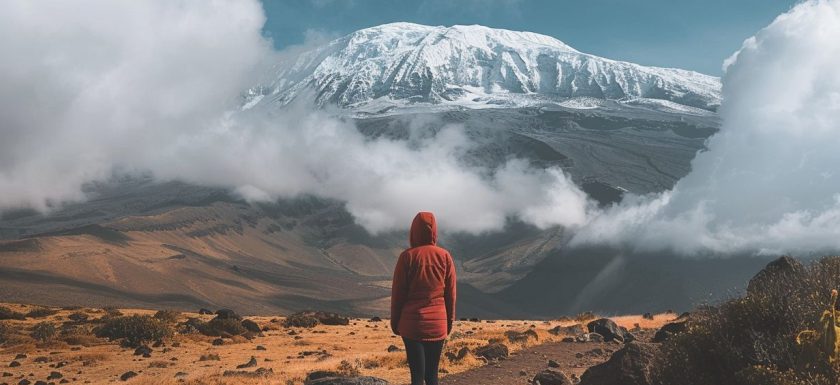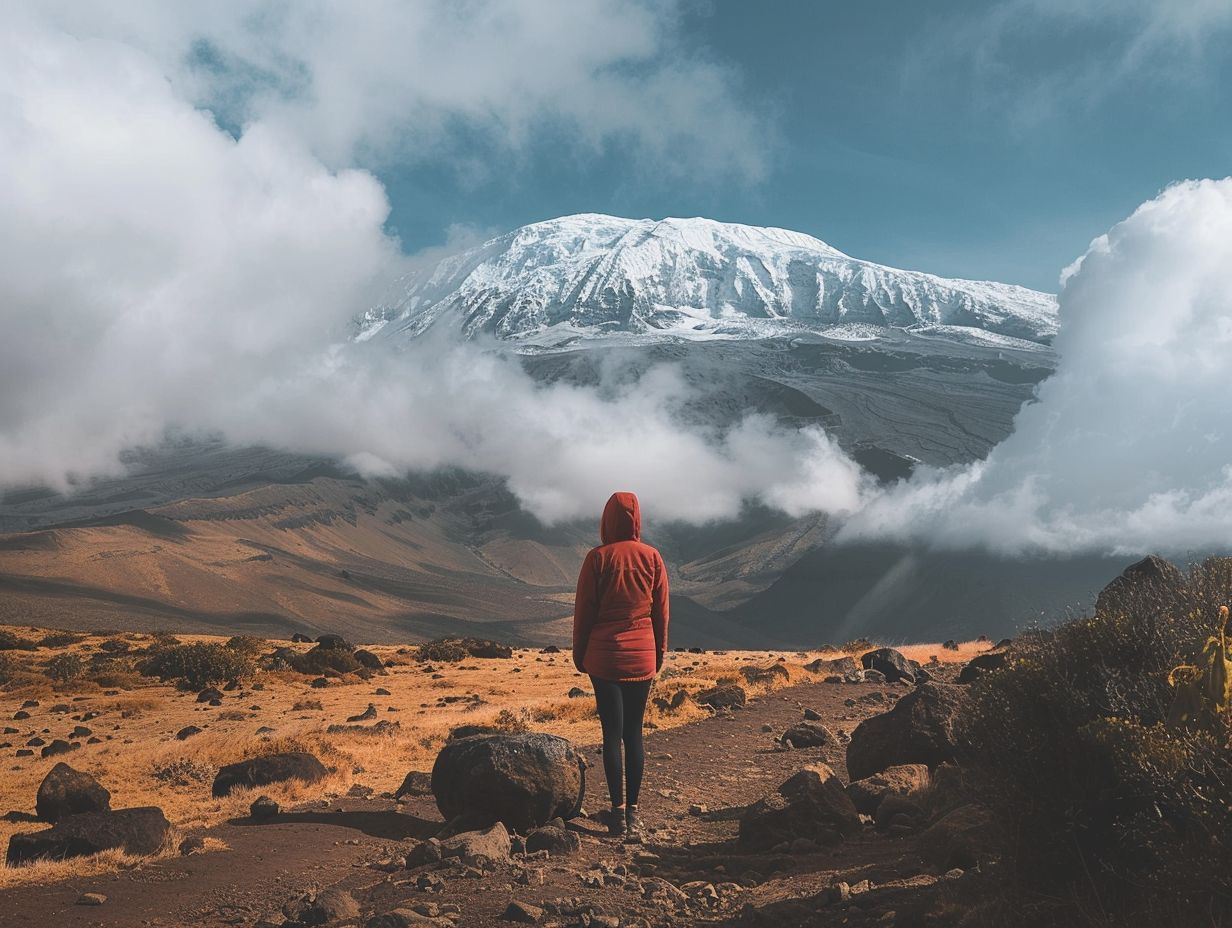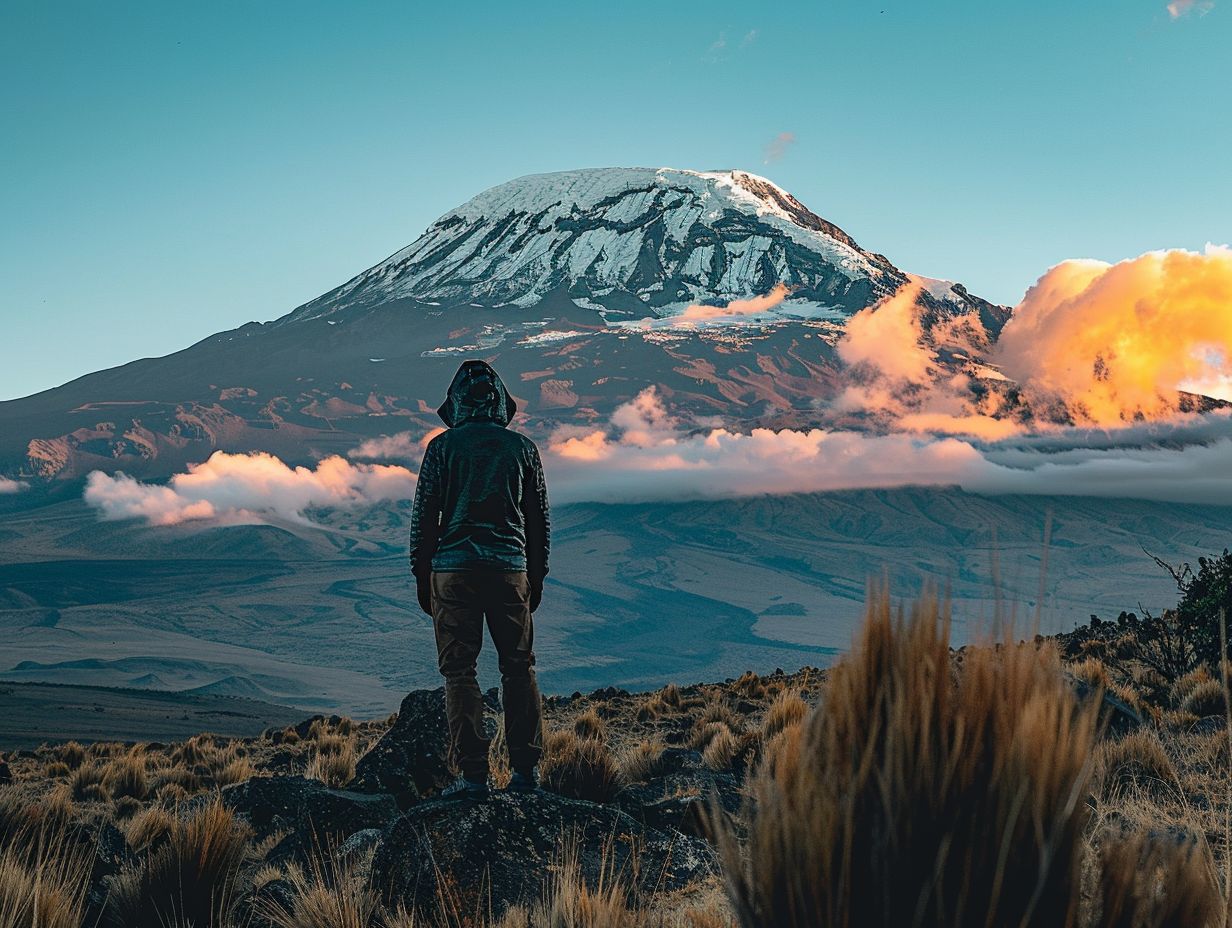
Thinking about climbing Kilimanjaro? Before you embark on this incredible adventure, there are some key things you should know to ensure a successful and enjoyable experience.
From the length of the hike to the risk of altitude sickness, this article will provide you with all the essential information you need to prepare for your Kilimanjaro climb.
We will also discuss what to pack, how to train and prepare, and offer valuable tips for a successful summit.
So, lace up your hiking boots and get ready to conquer Africa’s highest peak!
Key Takeaways:

- Proper physical and mental preparation is crucial for a successful Kilimanjaro climb.
- Choosing the right gear, including essential items and proper clothing and footwear, is essential for a safe and comfortable climb.
- Working with a reputable tour company and following tips for acclimatization, hydration, and nutrition can greatly increase the chances of a successful climb and reduce the risk of altitude sickness.
What to Expect When Climbing Kilimanjaro
Climbing Kilimanjaro is a remarkable adventure that involves conquering Africa’s highest peak, Kilimanjaro. It is located in Tanzania and offers breathtaking views and a challenging ascent to the summit, Uhuru Peak.
There are several hiking routes to reach the summit, with the Marangu Route being one of the most popular due to its gradual ascent and comfortable huts along the way. Other routes like Machame and Lemosho offer more scenic views but are steeper and more challenging.
Porters play a vital role in supporting climbers by carrying gear, setting up camp, and providing encouragement along the journey. These local guides are essential for a successful summit attempt as they help alleviate the physical burden on trekkers.
Challenges during the trek include altitude sickness, extreme weather conditions, and fatigue. Proper acclimatization, hydration, and nutrition are crucial to combat these obstacles and increase the chances of reaching the summit safely.
How Long is the Hike?
The duration of a Kilimanjaro hike varies depending on the chosen route, with average treks lasting between 5 to 9 days.
There are several routes up Kilimanjaro, each varying in length and difficulty. For instance, the Marangu route, also known as the ‘Coca-Cola’ route, typically takes around 5 to 6 days to summit the mountain. On the other hand, the challenging Lemosho route offers a longer trek lasting about 7 to 9 days, allowing for better acclimatization.
Factors like altitude, terrain, and individual endurance greatly influence the trek’s duration. To combat altitude sickness and ensure a safe ascent, acclimatization periods at various camps, such as Horombo and Barafu, are crucial during the climb.
What is the Difficulty Level?
Climbing Kilimanjaro presents a moderate to challenging difficulty level, requiring physical and mental endurance to overcome the varying terrains and altitude.
At an elevation of over 19,000 feet, climbers face a significant risk of altitude sickness, also known as acute mountain sickness (AMS). This condition can cause symptoms like headaches, nausea, and fatigue, potentially hampering the ascent. The steep ascents and treacherous paths add to the challenge, testing one’s physical capabilities and stamina.
The mental fortitude needed to reach the summit cannot be overstated. Climbers often find themselves battling fatigue, self-doubt, and the harsh conditions of high altitudes. To put it into perspective, while Kilimanjaro is not as technically demanding as Everest, the endurance required can be equally daunting.
The contrast between the icy slopes of Everest and the lush beauty of the Ngorongoro Crater offers a vivid comparison of the challenges climbers face across different terrains.
What is the Weather Like?
The weather on Kilimanjaro can be unpredictable, with temperatures ranging from hot at the base to freezing at the summit, and frequent changes in climate throughout the day.
These fluctuating weather patterns can create challenging conditions for climbers, especially considering the drastic temperature differences between the lower slopes and the barren, icy summit. It is essential for climbers to be well-prepared with appropriate gear and layering clothing to adapt to the varying conditions.
Starting the ascent in mild weather at the base in the early morning may give way to chilly winds and low temperatures as the day progresses, emphasizing the necessity of versatile clothing options. Witnessing the breathtaking sunrise from the summit can be a remarkable experience, but the extreme cold can make it a daunting task without proper gear and layering.”
What is the Altitude Sickness Risk?
Altitude sickness is a significant risk when climbing Kilimanjaro due to the rapid altitude gain, with symptoms ranging from mild discomfort to severe illness.
Proper hydration plays a crucial role in minimizing the chances of altitude sickness. Ensuring you drink plenty of water helps your body adjust to the thinner air at higher elevations and reduces the risk of dehydration, a common trigger for altitude-related issues.
Additionally, acclimatization is key. It’s important to take it slow, allowing your body time to adjust to the decreasing oxygen levels as you climb higher. These tips can help mitigate the challenges posed by climbing at high altitudes.
What to Pack for Climbing Kilimanjaro

Packing for a Kilimanjaro climb requires careful consideration of essential gear, appropriate clothing and footwear, sufficient food and water supplies, and personal items for the journey.
When preparing for this challenging expedition, it is vital to prioritize your hydration and nutrition needs. Proper hydration is crucial at high altitudes to prevent altitude sickness and maintain peak performance. Carrying a reliable hydration system like a CamelPak or Platypus hydration pack ensures easy access to water throughout the trek.
Choosing the right clothing and gear is paramount for both comfort and safety. Opt for moisture-wicking base layers, insulated jackets, waterproof outerwear, and sturdy hiking boots to cope with Kilimanjaro’s diverse terrain and unpredictable weather conditions.
Include high-energy snacks, electrolyte-rich drinks, and lightweight yet nutrient-dense meals in your provisions. These will fuel your body and help you cope with the physical demands of the ascent.
Essential Gear
Essential gear for climbing Kilimanjaro includes appropriate trekking poles, sturdy hiking boots, a headlamp, a reliable backpack, and a CamelPak or Platypus for hydration.
Porters play a crucial role in carrying the heavy loads during the trek, so investing in a comfortable and well-fitted backpack will help distribute the weight effectively. Trekking poles are essential to provide stability and support on the challenging terrains of Kilimanjaro, reducing strain on knees and improving balance.
A reliable headlamp with extra batteries is crucial for early morning starts and navigating after dark. Sturdy hiking boots with good ankle support and a firm grip are vital to prevent slips and ensure a comfortable trekking experience.
Clothing and Footwear
Proper clothing and footwear are crucial for Kilimanjaro climbers, including moisture-wicking base layers, insulating mid-layers, waterproof outer layers, and sturdy hiking boots.
When embarking on a trek up the iconic Kilimanjaro, one must be prepared for a variety of climates and terrains. The right gear can make a significant difference in comfort and safety during the ascent. Dioralyte, a popular rehydration solution, is highly recommended to combat altitude sickness and keep climbers energized.
A layering system composed of breathable fabrics is essential, providing warmth while allowing sweat to evaporate. Quality hiking boots with proper ankle support and grip are paramount for navigating the rugged trails of this majestic mountain.
Food and Water
Adequate food and water supplies are essential for sustaining energy and hydration during a Kilimanjaro climb, including high-energy snacks, electrolyte-rich drinks, and water purification tablets.
For nutrition, climbers should focus on lightweight, nutrient-dense meals that are easy to prepare at various altitudes. Foods rich in carbohydrates, proteins, and healthy fats are ideal for sustaining energy levels.
Additionally, maintaining proper hydration is crucial, so it’s recommended to carry a hydration bladder or water bottles to drink regularly. Electrolyte drinks can help replenish essential minerals lost through sweating, while water purification tablets ensure access to safe drinking water throughout the journey.
Personal Items
Personal items such as sunscreen, sunglasses, a first aid kit, toiletries, and trekking poles are essential for climbers to ensure comfort, safety, and well-being during the Kilimanjaro expedition.
When embarking on the challenging journey up Kilimanjaro, climbers need to be equipped with the right gear to conquer the elements. Trekking poles play a crucial role in providing stability on uneven terrain and reducing strain on the lower body during the ascent.
Likewise, a well-stocked first aid kit can be a lifesaver in emergencies, containing essential items like bandages, antiseptic wipes, and altitude sickness medication. Companies like Intrepid often recommend specific brands and products that have been tried and tested on the mountain, ensuring climbers are well-prepared for any situation.
Training and Preparation for Climbing Kilimanjaro
Training and preparation are key components of successfully climbing Kilimanjaro, encompassing physical conditioning, mental readiness, and familiarity with high-altitude environments.
Climbing Kilimanjaro is not just a physical feat, but a mental and emotional challenge as well. The intense physical demands require climbers to possess endurance, strength, and agility to navigate the rugged terrain and extreme weather conditions.
Mental preparedness is equally crucial; climbers must conquer doubts, fears, and mental fatigue to push through the arduous journey. Understanding the effects of high-altitude on the body and mind is essential for a successful ascent. Incorporating Swahili phrases and cultural insights along the way adds a unique layer of experience to the climb.
Physical Training

Physical training for a Kilimanjaro climb should focus on cardiovascular endurance, leg strength, and core stability to prepare the body for the rigors of high-altitude trekking.
Cardiovascular endurance is crucial for climbers as it helps increase the heart’s ability to deliver oxygen to muscles efficiently. Engage in activities like running, cycling, or rowing to boost endurance. Incorporating interval training can also mimic the varying intensities experienced during treks.
Leg strength exercises such as squats, lunges, and calf raises are essential for navigating steep inclines en route to the summit. To improve core stability, include planks, Russian twists, and mountain climbers in your workout routine. These exercises will help climbers maintain balance and stability on challenging terrain.
Mental Preparation
Mental preparation for climbing Kilimanjaro involves developing resilience, positive thinking, and coping strategies for facing the physical and mental challenges of high-altitude trekking.
Climbers must understand that the journey not only tests their physical strength but also their mental fortitude. Building mental resilience can be likened to the lessons learned from the wise Rafiki in the Lion King, who emphasizes the importance of looking beyond what they see.
Visualization techniques, deep breathing exercises, and mantra repetition are tools that can help climbers stay focused and motivated during the arduous climb.
Tips for a Successful Kilimanjaro Climb
To ensure a successful Kilimanjaro climb, climbers should prioritize acclimatization, maintain proper hydration and nutrition, choose the right route, and collaborate with a reputable tour company for logistical support.
Acclimatization is crucial in allowing the body to adjust to the decreasing oxygen levels at higher altitudes, reducing the risk of altitude sickness and increasing the chances of reaching the Uhuru Peak successfully. It is recommended to include rest days during the ascent to aid in acclimatization.
Hydration is another key aspect of preparing for the Kilimanjaro climb. Adequate water intake helps with altitude adaptation and prevents dehydration, enhancing overall performance and well-being throughout the trek.
Choosing the right route, such as the Marangu or Machame route offered by Ultimate Kilimanjaro, can significantly impact the climbing experience. Factors like duration, scenery, and difficulty level should be considered when selecting a route.
Acclimatization
Proper acclimatization is crucial for Kilimanjaro climbers to adjust to high altitudes gradually, reducing the risk of altitude sickness and maximizing summit success.
This entails implementing strategic acclimatization strategies such as incorporating gradual altitude gains throughout the trek.
By allowing the body time to acclimate to the reduced oxygen levels at different campsites, climbers increase their chances of successfully reaching the summit. Taking rest days to recharge and adapt becomes equally vital in this journey to the top.
Witnessing the breathtaking hues of the sunrise from these elevated points is not only a visual treat but also a reminder of the significance of allowing one’s body to adjust naturally.
Proper Hydration and Nutrition
Maintaining proper hydration and nutrition is essential for Kilimanjaro climbers to sustain energy levels, prevent altitude-related illnesses, and optimize performance during the climb.
When trekking up the majestic peak of Kilimanjaro, the intense physical demands can quickly deplete the body of essential fluids and nutrients. It’s crucial for climbers to drink plenty of electrolyte-rich fluids to replenish vital minerals lost through sweat and exertion, helping to stave off dehydration and fatigue.
Packing high-energy snacks like nuts, protein bars, and dried fruits can provide a quick burst of sustenance when energy levels dip. Just like how Elton John brings electrifying energy to his performances, climbers need to fuel their bodies with the right balance of nutrients to conquer the mountain.
Choosing the Right Route
Selecting the appropriate route is crucial for a successful Kilimanjaro climb, with options like the Marangu Route offering different landscapes, difficulty levels, and accommodation styles.
Each Kilimanjaro climbing route presents a distinct experience for adventurers. For instance, the Machame Route, known as the ‘Whiskey Route,’ winds through lush rainforests before ascending the stunning Shira Plateau.
On the other hand, the Lemosho Route, heralded as having the most scenic views, allows hikers to witness wildlife in the distance, offering glimpses of Tanzania’s vastness and even the distant Serengeti National Park.
Working with a Reputable Tour Company

Collaborating with a reputable tour company is advisable for Kilimanjaro climbers to ensure logistical support, experienced guides, and safe trekking practices throughout the expedition.
When selecting a tour company, guides and porters designated by the company play a crucial role in enhancing the climbing experience. Expert guides not only lead the way but also provide valuable insights into the mountain’s history and ecosystem.
Porters assist in carrying equipment, ensuring climbers can focus on the trek itself. The safety measures implemented by reliable companies prioritize your well-being during the challenging ascent, from proper acclimatization strategies to emergency response protocols.
Frequently Asked Questions
What I Wish I Knew Before Climbing Kilimanjaro
What is the best time of year to climb Kilimanjaro?
The best time to climb Kilimanjaro is during the dry season, which is from January to mid-March and from June to October. This will provide the best weather conditions for your climb.
What I Wish I Knew Before Climbing Kilimanjaro
How physically fit do I need to be to climb Kilimanjaro?
While Kilimanjaro is not a technical climb, it is still a physically demanding trek. It is recommended to have a good level of fitness and to train beforehand to ensure a successful and enjoyable climb.
What I Wish I Knew Before Climbing Kilimanjaro
What type of gear do I need to bring for the climb?
The most important gear for Kilimanjaro includes a good pair of hiking boots, warm and waterproof clothing, a sleeping bag, and a daypack. It is important to pack light and only bring essentials as you will have to carry your own gear during the climb.
What I Wish I Knew Before Climbing Kilimanjaro
Is altitude sickness a concern when climbing Kilimanjaro?
Yes, altitude sickness is a common concern when climbing Kilimanjaro. It is important to acclimatize properly and listen to your guide’s instructions. It is also recommended to take altitude sickness medication as a precaution.
What I Wish I Knew Before Climbing Kilimanjaro
How many days does it take to climb Kilimanjaro?
The average duration for a Kilimanjaro climb is 6-7 days, but this can vary depending on which route you take. It is important to choose a longer route to allow for proper acclimatization and increase your chances of reaching the summit.
What I Wish I Knew Before Climbing Kilimanjaro
What should I expect on the summit day of Kilimanjaro?
The summit day of Kilimanjaro is the most challenging and physically demanding day of the climb. Expect to wake up early and hike for 7-8 hours to reach the summit. The terrain will be steep and rocky, and the air will be thin. But the feeling of reaching the summit is truly unforgettable.